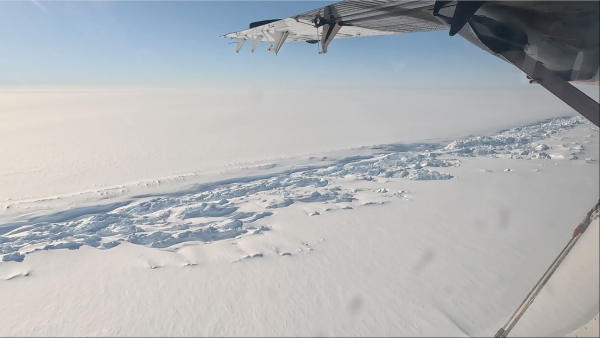Tidally modulated icequake periodicity and its implication for rift zone dynamics
Mong-Han Huang
University of Maryland

- Date & Time
- Location
- Online-only seminar via Microsoft Teams
- Host
- Curtis Baden
- Summary
The Ross Ice Shelf (RIS) in Antarctica is the largest ice shelf in the world. As the RIS flows toward the Ross Sea, a buildup of tensile stress due to increasing ice flow velocity develops a series of flow-perpendicular rift zones. Although these rifts are essential in contributing to future calving and reduction in size of the ice shelf, their material properties and mechanical response to external stress in the rift zone scale (~10-100 km) are poorly understood, partly due to a lack of high spatial-temporal scale in-situ observations to characterize key rift processes. Using a deployment of seismometers and GPS stations from the NSF DRRIS project and recently by our team, we further explore the link between seismicity, tidal cycles, and air temperature at two rifts of different ages. We found that icequakes along the major rift zones on RIS are modulated with the oscillating tidal stressing rate, and icequakes have a stronger modulation with stress rate in older rifts. We adopted the theory proposed by Heimisson and Avouac (2020) about seismicity rate due to oscillating stresses for icequakes. On RIS, the characteristic time scale from elevated icequake seismicity rate to background rate is much shorter than the periodicity of the tidal stresses, and therefore the seismicity rate is proportional to the stressing rate. This also suggests that how stress varies in time, rather than the total quantity of stress, has a higher contribution to brittle fractures in ice shelves. Constraining the current behavior of ice shelf rifts and their modulation by oscillating stresses will help inform their future stability in a changing climate.
Closed captions are typically available a few days after the seminar. To turn them on, press the ‘CC’ button on the video player. For older seminars that don’t have closed captions, please email us, and we will do our best to accommodate your request.
 Jump to Navigation
Jump to Navigation